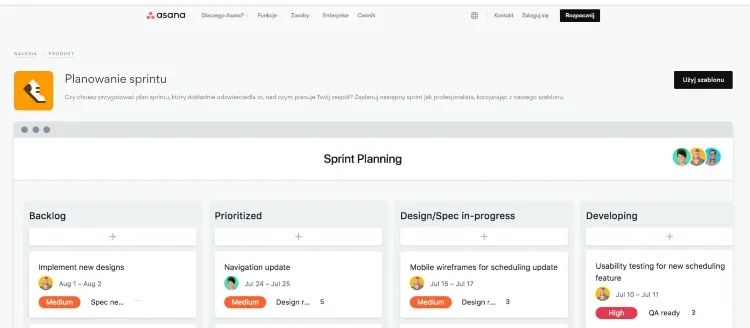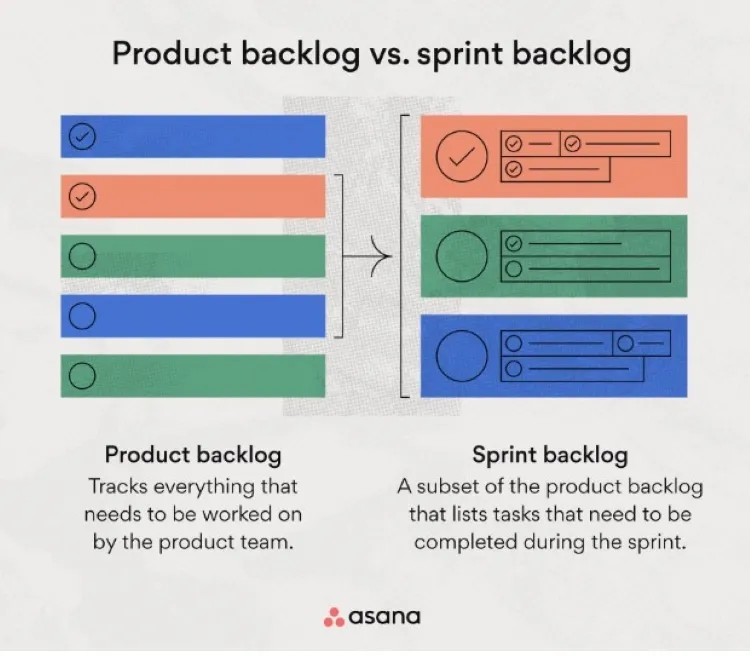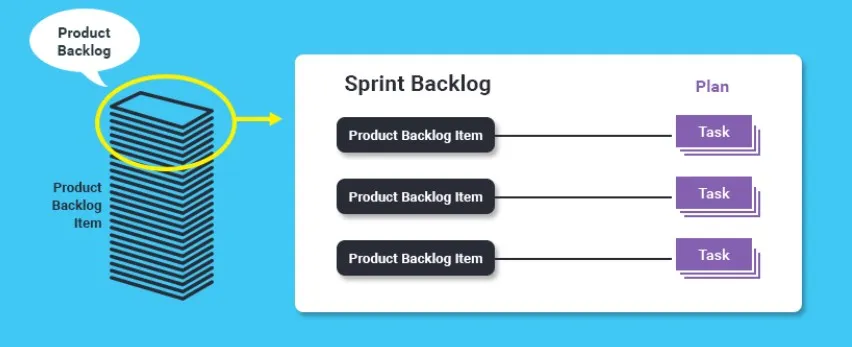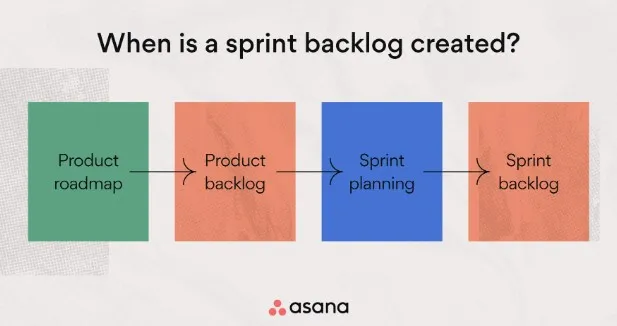Terms such as Sprint Planning, Sprint Backlog, Scrum Guide, Sprint Goal, Product Owner, Scrum Team, Sprint Value, and Scrum Master are inseparable parts of Agile methodologies.
Sprint planning is one of the most important terms and elements of the Scrum framework. Sprint planning is an event that allows you to define "what," "by who," and "in what way" can be accomplished in the upcoming Sprint.
Sprints are a basis of operation for most design and development teams. They're a tool that helps increase the probability of achieving objectives.
The Sprint goal also reinforces engagement, improves the team's concentration, and reduces the risk of emergencies.
Thus, planning them is an essential task that's very beneficial.
How to plan Sprints? What is the goal of the Sprint? How should such an event be carried out?
Who is responsible for planning Sprints? How much time should be spent on planning a new Sprint?
Does spending time on such activities even make sense, and what benefits can they bring to teams working in Agile methodologies?
We'll face these questions today and try to find answers to them.
We cordially invite you to read the article!
What is a Sprint?
Although we've written about Sprints in a separate article, "What is a Sprint?" it can't hurt to remind you about a basic definition and idea of Sprint.
The official "The 2020 Scrum Guide" defines Sprint as the heartbeat of Scrum, thanks to which ideas change into a specific value.
Digital products developed in agile methodologies are created precisely through Sprints, which are — to put it in more concrete language — a predetermined time in which a specific work should be done and submitted for review.
We must emphasize that the time and planned work expressed through tasks are fixed values.
It should also be noted that the result of accomplished work during a given period isn't and can't be absolute.
Hence, you can't write or think about the result as something that must happen in assumed conditions but as something that should happen.
Assuming that the team won't encounter problems that won't allow them to finish the planned tasks.

Each Sprint is preceded by a meeting — Sprint planning — during which the Product Owner, a person that commissions the work, and the development team determine what work will be accomplished during a Sprint.
Sprints are events characterized by the following:
- Fixed duration
- Repetitiveness
- Consistency
- Fixed structure in which Sprint planning, Daily Scrum, and Scrum retrospective can be distinguished
- Determined scope of tasks
- Defined set of roles, functions, tasks, and activities
- Determined goal.
Sprints follow one another and enable you to lead the project in the following ways:
- Rational
- Predictable
- Structured
- Procedural
- Controlled
- Specific
- Defined.
What's equally important, no changes are made during each Sprint that would jeopardize the Sprint goal. The scope of work is determined regarding time and form.
Primarily, Sprints are used to:
- Better organize work
- Increase and improve the flexibility of the project
- Reduce risks
- Improve adaptability
- Increase work efficiency
- Set an appropriate work rhythm, thanks to which it's possible to counteract the burnout of employees or reduction of their engagement in the project
- Improve the accuracy of decisions.
In turn, as the authors write on Atlassian Agile Coach, Sprints are the essence of agile methodologies. If they're properly organized, they make digital products — such as mobile and web applications — much more perfect.
Moreover, as mentioned by the authors above, Sprints influence the work atmosphere and emotions accompanying software creation, reduce stress, and allow the team to create the software more peacefully.
In summary, Sprints are often defined as relatively short periods (lasting a week or two) in which the project and development team work on a precisely defined goal in which the team has a specific amount of work to do.
What is Sprint planning?
Now that you know what Sprints are and what they're used for, we can move on to the crucial problem of this article, namely, the definition of Sprint planning.
Since the Sprint is a time-defined event with a specifically determined goal, it must be planned appropriately.
Sprint planning in agile methodologies is defined as a stage, a task in which teams decide what will be the subject of the next Sprint, what tasks will be performed, what portion of the work they will accomplish, and what goals and effects they will want to achieve.
The Product Owner or Scrum Master leads the meeting during which Sprint planning is done most often.
The Sprint Goal, task, and scope of work are determined based on a Product Backlog, which is simply an ordered and structured list of tasks, functions, or elements that need to be done as a part of a larger plan.
To put it differently, a Product Backlog is a list from which it should be clear what is needed in the product and in what order a given element should be delivered or deployed.
However, remember that the Product Backlog is supposed to be a complete list that contains the entire work that should be done to create the digital product.
The more perfect, detailed, specific, and precise the Backlog, the better and more rational Sprint planning is.
The Product Backlog represents time and suggests the number of weeks or months needed to finish the digital product. That's why the division into smaller work units — Sprints — is warranted.
As a side note, a crucial function of the Product Backlog is dividing work and tasks into smaller parts and giving them ranks — prioritizing.
Thanks to that, team members can see the dependencies and importance of given parts for the entire software development process.
Who creates the plan of a Sprint? Who defines the goal of a Sprint?
Although technically, Product Owners or Scrum Masters are responsible for Sprint Planning, the whole team works on it.
It's necessary because it allows them to understand the essence of tasks better, the dependencies of individual elements, and the state of the work.
Thus, it doesn't only serve to communicate and indicate tasks but also to obtain a shared team perspective.

It enables the team to indicate the problems they face and allows them to account for them in the next Sprint.
What does the Sprint planning meeting look like?
How to conduct Sprint planning? — this question appears frequently. It's important to prepare properly for Sprint planning.
The meeting that will allow you to start a new Sprint requires the following:
- Proper preparation of all team members
- Collecting information — the Scrum Master especially should have the relevant knowledge and information which they obtain from team members (e.g., about planned leaves) and stakeholders (who can, but usually rarely attend the Sprint planning event)
- Keeping the Backlog clear and regularly and often updated
- A plan thanks to which the meeting won't be conducted chaotically but according to a determined agenda.
It's worth remembering that Sprint planning is also an excellent opportunity to renew the sense of purpose in the team and establish standards according to which the work will be done.
The abovementioned meeting agenda should include, among others, a section summarizing the progress of the work of team members. It also should express problems, goals, and concerns.
For example, unavailability of resources, issues with communication within the team, and all internal and external obstacles should be discussed during Sprint planning.
The success of Sprint planning also depends on whether a given team has a leader that fulfills this function and is seen as such by team members.
Above else, the role of the leader includes the following:
- Managing Sprint planning — indicating the goal of the Sprint which the development team should achieve
- Managing the capabilities of the team
- Counteracting the workload
- Organizing items in the Product Backlog.
In summary: a Sprint planning meeting creates conditions, environment, and atmosphere that influences motivation.

Thanks to Sprint planning, the desire to achieve success should become the next important motivator for team members and the entire team as such.
How to plan Sprints?
Sprint planning occurs after the Scrum retrospective (we've written about it in the article "Scrum Retrospective").
From the standpoint of the smooth running of the project and efficiency, this is very understandable and reasonable.
A well-planned Sprint should include the following:
- A clearly defined goal that should be determined by answering the question — What should be done and achieved in the next Sprint?
- Ways for achieving the goal and a strategy that should be defined by answering the question — What is the best way to do this task?
- Identification of people who will work on specific tasks by answering the question — Who should do this task? — this allows you to avoid the duplication of work and the lack of responsibility for performing a given task.
Each of the above questions should have an answer that will be helpful for the team, and it should be realistic, which means that the team should be able to do it.
Scrum Master sets a general framework and indicates goals, but they don't impose them; instead, together with the team, they think about whether it's possible to achieve them in the next Sprint.
The Product Owner delivers and defines the goal, but the development team estimates if it's doable.
And here, we need to emphasize a vital thing.
For estimation to be accurate to the team's capabilities, it must be done under conditions and in an environment where there is an atmosphere of mutual trust.
The flow of information, evaluations, predictions, doubts, comments, and suggestions should be unrestricted and aimed at improving the team and learning from each other. Hence, criticism and judging should be avoided.
In this regard, it is worth using the advice offered by the authors from Atlassian Agile Coach.
They rightly noticed that the estimation made by the development team couldn't be subject to evaluation or confrontation because it would create a very unhealthy atmosphere.
As a result, in the next Sprint planning, the estimate will either be overestimated or underestimated and will sooner serve to confirm the infallibility of a given employee and their honesty rather than their ability to predict working time.
The entire team is responsible for achieving the Sprint goal, and only they can answer the question of whether the proposed by the Scrum Master/Product Owner goal is possible to accomplish during the Sprint.
However, Sprint planning is not pure guesswork but a rational procedure based on the results of the previous product increment and the development team's capabilities.
The way of achieving the Sprint goal is also the effect of negotiations, discussions, and compromise that not only allow you to determine the conditions and possibilities but also estimate the necessary effort.
It is also worth noting that Sprint planning should also be used to check whether the team is prepared to achieve a given goal regarding competencies.

As a result, Sprint planning should enable the team to obtain a shared perspective and certainty regarding the scope of work, ways of doing it, and ranges of responsibilities.
During Sprint planning, it's also necessary to discuss three fundamental matters, namely:
- Determining the importance and value of the Sprint expressed in the question — Why is the Sprint valuable?
- Defining what is achievable in the next Sprint by answering the question — What can be done in the next Sprint?
- Specifying how the work will be done by answering the question — How will the work be accomplished?
Determining the amount of work requires experience (understanding the work intensity of a given task) and awareness of self-efficiency, which the team should also have.
A good summary of this part of our discussion is a remark made by authors from Atlassian Agile Coach. And they warn against an overly dogmatic approach to Sprint planning.
Sprint planning should be nothing more and nothing less than a plan that shouldn't be a burden or restriction for the team.
Its role is to make the team focus on valuable results. Sprint planning should also be a protective umbrella for the team's self-organization.
Benefits of Sprint planning
Using agile methodologies to create digital products allows you to manage projects and teams more effectively, rationally, profoundly, and with more awareness.
Sprint planning, as a critical element of the process, also enables you to accomplish goals more effectively.
In practice, this means more effective use of:
- Time
- Budget
- Resources
- The potential of individual team members and the team that should be understood as a synergistic value.
Well-planned Sprints allow team members to focus better on the Sprint goal, tasks, means, tools, and values.

Furthermore, Sprint planning helps achieve better transparency of the situation. Transparency also means defining a common definition of done for the entire team. The criteria are known, common, and thus predictable and understandable.
By knowing "what," "how," and "by who," teams understand what they're supposed to do, thanks to which they can achieve the assumed effects more quickly.
Sprint planning. Summary
- Using agile methodologies to create digital products allows you to manage projects and teams more effectively, rationally, profoundly, and with more awareness.
- Sprint is defined as a short period in which the development team works on a precisely defined goal and has a specific amount of work to finish.
- Digital products developed in agile methodologies are created precisely through Sprints, a predetermined time when a specific work should be done and submitted for review.
- Sprint planning is an event that allows you to determine the Sprint goal and to define "what," "by who," and "how" is to be accomplished in the upcoming Sprint. Development team members know what to do during the Sprint, what will the next Sprint include, and how it will be different from the current one.
- During Sprint planning, the Product Owner and the development team establish what work will be accomplished during the Sprint.
- The way of achieving the goal is also the effect of negotiations, discussions, and compromise that not only allow you to determine the conditions and possibilities but also estimate the necessary effort.
- Sprints follow one another and help you run the project in a rational, predictable, structured, procedural, controllable, specific, and defined way.
- Sprints are primarily used to organize work better, increase and improve project flexibility, and reduce risks. Similar to Daily Scrum.
- Sprints influence the work atmosphere and emotions accompanying software creation, reduce stress, and allow the team to create the software more peacefully.
- Sprint planning is defined as a stage in which teams decide what will be the subject of the next Sprint, what tasks will be performed, what portion of the work they will accomplish, and what goals and effects they will want to achieve.
- The success of Sprint planning also depends on whether a given team has a leader that fulfills this function and is seen this way by team members.
- A well-planned Sprint should include a clearly defined goal, ways of achieving it, a strategy of operations, and tasks delegated to specific people.
- However, Sprint planning is a rational procedure based on the results of the previous product increment and the development team's capabilities.
- Sprint planning should be nothing more and nothing less than a plan that shouldn't be a burden or restriction for the team.
- Sprint planning helps achieve better transparency of the situation. Transparency also means defining a common definition of done for the entire team.
- By knowing "what," "how," and "by who," teams understand what they're supposed to do, thanks to which they can achieve the assumed effects more quickly.







